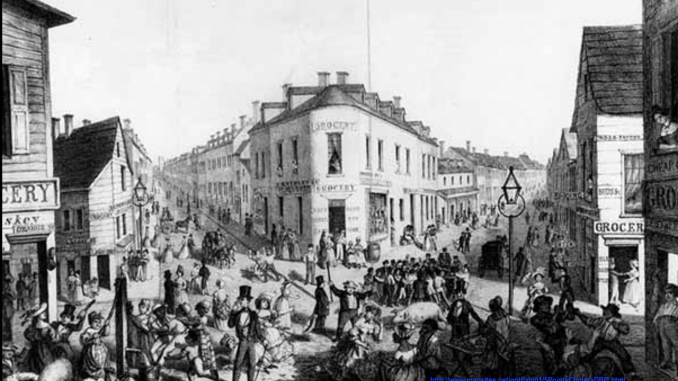
![]()
Introduction:
Chapter One closed with the fact that they New York State (NYS) Constitutional Convention of 1821 removed the restriction of “manhood suffrage” which resulted in non-landowning males to vote thus increasing the voter base and Tammany’s influence. Additionally, the chapter closed with the introduction to the cause for the exponential growth in Tammany’s membership, influence, and power which was a result of the influx of Irish immigrants who fled Ireland during the Great Irish Famine (1845-49.) This chapter will address how Tammany Hall controlled who the candidates for office were, how their campaigns were structured, how they won elections, and how Tammany and the elected/appointed officials corrupted NYC government.
A Brief History of the Voting Process:
Another factor that greatly influenced Tammany’s meteoric rise in politics was the manner in which New York City (NYC) and NYS executed elections. Absent any laws relating to and regulating the local electoral process, each election cycle was conducted not in accordance with the law, but by politics and politicians. It was this system that likely caused the most famously corrupt Grand Sachem of NYC’s Tammany Wigwam, William Marcy “Boss” Tweed to be quoted, in an 1871 cartoon by Thomas Nast, to have said “As long as I count the votes what are you going to do about it?”
“When this government of the United States was founded, a vote was entirely an individual matter, and the government had neither the desire, nor the power to regulate its manner or expression. Political parties developed, and it was the party that the government always interested the development of the machinery for the expression of the will of the people. The state always disclaimed practically all responsibility for the one check that the citizen had on it, the casting of the ballot, and with slight limitations it still disclaims such responsibility. Unless corruption can b
e proved, the state does not bother much with the business of the ballot.”[1]Hence, the party with the most ballots in-hand (literally as there were no secret ballots) won the election. What prevented a citizen with political aspirations to run for office in opposition of Tammany or an established political party? The printing of tens of thousands of ballots cost a lot of money. The printers set the cost of printing and, if they wanted lucrative city and Tammany-related contracts, were influenced by Tammany. Individual candidates could not afford to have an adequate number of ballots printed, thus any grass root candidates were precluded from seeking office. Only candidates backed by the political parties, which in the 1820s were called “Democratic” or “Whig” could afford to have enough ballots printed to win! Where did the parties get the money for campaign expenses, including the all-important printed ballot? From unregulated contributions by political backers which included individuals, businesses, active political office-holders, and political entities such as Tammany Hall. In later years, additional sources of campaign revenue for Tammany came from the blackmail of legitimate businessmen, banks, corporations, gamblers, saloon-keepers, and gunmen.
“To the Victors Belong the Spoils”
Once elected, Tammany’s Democratic “Jacksonian” officials would fall into the system. The system was one where the office-holders would maximize the revenue (graft) made available by their government positions and turn the same over to Tammany for the continued mutual benefit of its members in order to fund future candidates and advancements that benefited Tammany and its members. Sound familiar? The 2016 season, CBS’ 60 Minutes investigative televised news program did an exposé on how today’s Democratic and Republican parties both have offices near the U.S. Capitol where members of Congress are required to spend hours a day raising money for the party via telephonic solicitations. As it is today vis-à-vis lobbyists and Political Action Committees (PACs) the same held true for Tammany and the Democratic Party. Corporations (any entity) which sought the passage of favorable laws, or the receipt of government contracts, or any action/lack of action that benefited them, paid Tammany via kickbacks, bribes, and unofficial taxes to guarantee that their wishes be granted.[2]
Hence, the governmental system was corrupt and the need to engage in various acts of corruption was necessary to maintain Tammany’s rule over the system. This was, in part, guaranteed by the election/appointment of key Tammany men to government positions that could earn money for Tammany. One example of this the case of NYC’s First Grand Sachem, William Mooney. Mooney became the Superintendent of NYC’s Almshouse, a government institution established to aid the indigent, poor, and those unable to support themselves – a retreat of last resort for thousands. Annually, Mooney exceeded his budgeted salary and engaged in the business of selling alcohol to the poor souls in the almshouse, which resulted in him pocketing thousands of dollars!
In 1832, speaking before the U.S Congress, while defending NYS’ system of patronage and in defense of his constituents, and fellow politicians, against allegations of corruption, William M. Marcy, U.S. Senator from New York, ended a statement with words that have become the creed for almost all elected officials since that time. Marcy said “If they win, they expect to reap all of the advantages. They see nothing wrong in the rule, that to the victors belong the spoils of the enemy.”[3] This maxim, which had previously applied to war, now applied to the pilfering of public finds, the collection of graft, and related criminal offenses by elected, and appointed, public officials.
It was not beneath Tammany to use force to win an election and to intimidate voters. The historic Election Riot of 1834 was the result of such action.
The Election Riot of 1834 – NYC’s First Armed Conflict Against the Police & the First Intervention of the U.S. Militia in an Election
It should be noted that there were several large-scale civil disturbances, arson fires, and riots between 1712 and 1871. These can be viewed as growing pains in the development of a young country. Unlike any disturbances prior to 1834, the famous “Election Riot of 1834” is an important part of the history of policing in New York City, and cannot be ignored by police historians when writing about such events.
Tuesday, April 8,1834, remains a historically important and significant date as it was the first of a three day voting period permitting the very first election for Mayor of the City of New York to be cast by popular ballot. Prior to this Mayoral election, mayors were appointed by the NYS Governor and NYC Council. [4] As such, there was a great deal of public interest in the process, and its outcome, particularly by the new class of voters: the non-landowning men, and the immigrants who, for the first time, were now qualified as voters.
According to history professor and author Tyler Anbinder’s 2001 book, entitled Five Points, “For the first time, the various groups opposed the policies of President Andrew Jackson and his Democratic party had unified in a single organizations just then becoming known as the Whig Party.” Tammany’s Democratic Party members were also referred to as “Jacksonian Democrats.” Anbinder continued “The rioting that day was unprecedented in the history of New York City – at least prior to July’s race riot.” 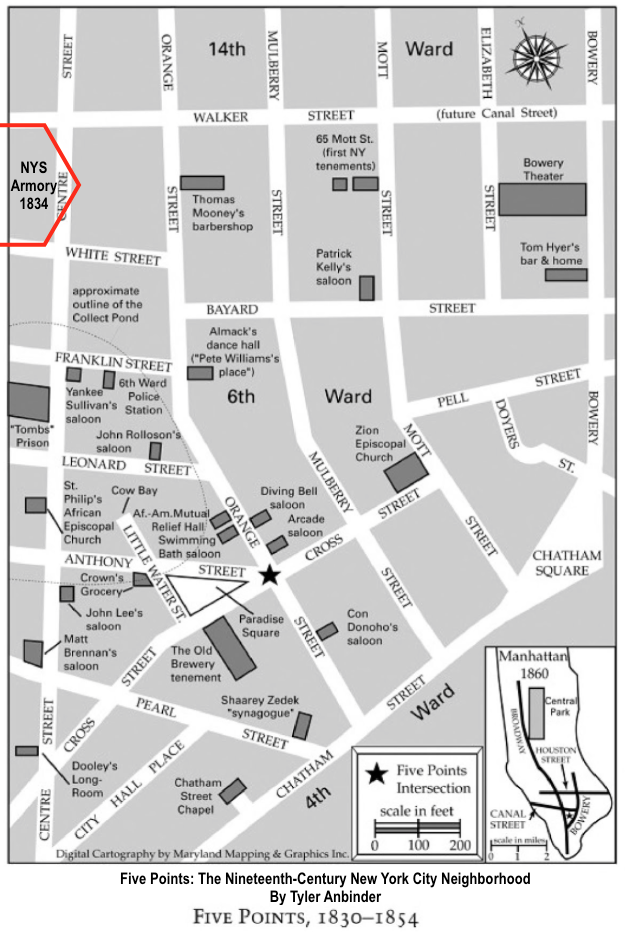
Voting took place over a three day period and the events that unfolded in those three days resulted in mob riots, the looting of the New York State’s Armory, the line of duty death of a NYC police Captain, and the first intervention by the United States Militia to quell a civil insurrection in NYC. So important was this election that Tammany would bring all of its force to bear on the outcome of electing their candidate resulting in the earliest active involvement, found to date, of the militia’s assistance to the NYC police while enforcing the law during an election.
Policing crime and the enforcement of criminal law was performed by the “Police Office” which was compromised of several entities, each with specific duties and authority. NYC was divided geographically into an Upper Police office and Lower Police office. The following are examples of these entities:
-Justices of the Peace -city, state, circuit and supreme courts (The mayor, and others, served ex officio)
-Police Clerks – Served the courts and justices
-Sheriffs – Served process, enforce judgements
-Constables – Two per ward, Peace Officers, total 34, elected annually
-Marshals – 100 in number, attended to courts, may be assigned to Police Duty
-The Watch – Six Districts in NYC, each with a Watch House, each with two Captains and four Assistant Captains, totaling 12 Captains, 24 Asst. Captains and 1,096 Watchmen divided into Postmen, Roundsmen, and Doormen. Roundsmen supervised the Postmen and Doormen (house duty).
-Day Police Officers – Appointed by the Mayor on nomination of the Alderman and Assistant Alderman of each ward.
-Sunday Officers – Appointed by Mayor to enforce the “Sunday Laws” (alcohol, noise, gun prohibitions, etc)
That Tuesday’s weather was stormy with a driving rain which did not dissuade the thousands of men from lining up at the polling places to cast their all-important votes. Businesses were closed to allow employed men the opportunity to exercise their votes, some voting for the first time since manhood suffrage was abolished. Tammany’s candidate, C. W. Lawrence, was selected by President Andrew Jackson, under whose previous election and administration the spoils were first exploited.
As it did for subsequent decades, Tammany sent “shoulder-knockers,” armed criminal gangs, and enforcers to each ward’s polling place(s). The Tammany Hall ward boss or ward heeler – “wards” were the city’s smallest political units from 1786 to 1938 – served as the local vote gatherer and provider of patronage.” [5]The presence and purpose of the ward boss and shoulder-knockers was to insure that no one would cast a ballot, other than those voting for Tammany’s candidate. As described above, ballots were printed in advance. These ballots were brought to the polling sites by voters, so it was easy to identify who was voting for whom. This worked well in all wards with the exception of the infamous “Bloody Sixth Ward,” which encompassed the slums of the infamous “Five Points” area where fights between mobs of men using paving stones, clubs and knives erupted during the election, and on a daily basis.
An extremely detailed report, dated April 23, 1834, regarding the historic insurrection that followed was presented by the State Commissary General, Henry Arcularius, in a report to the NYS Assembly Committee on the Militia and the Public Defense. The report was reprinted in many contemporary newspapers and subsequently in books written about the history of New York City. In sum and substance, General Arcularius reported the following:
“On Thursday, April 10, 1834, the last day of the election, the State Armory, located within the bounded on the north by White Street the south by Franklin St., the east by Centre St., and the west, by Elm (today’s Lafayette St.) and was approximately forty feet wide, constructed of brick, sand and mortar, and secured by a perimeter fence and layers of doors, each requiring keys to open them. The contents of the armory were 12,000 muskets, rifles pistols, and swords, all stored in a state of readiness, with a total value of $350,000.
The late election for mayor and charter officers in the city of New York produced an excitement such as has never been witnessed on any former occasion; with all the rage and fierceness manifested, the seizure of the arsenal and public arms was an act so diabolical in its intent, that the annunciation of the fact that such measure had been resorted to was received with astonishment and indignation by all parties.” Sometime after noon, a mob originating from the Masonic Hall polling place, appeared at the Armory, which was locked. A few of the mob scaled the perimeter fence and demanded the keys from the General’s son and wife, who refused to hand them over, even after threats to their safety had been made.
While walking on Franklin Street, the General was approached by his son, and others, who informed him of the incident and he hurried to the Arsenal where he found the agitated mob, many of whom he was able to recognize and identify by name, including General Robert Swartwout, the leader (Note: Any relation to Samuel is unknown.) Another man, identified as Capt. Johnson, ‘stated that they wanted arms to defend themselves, and insisted upon having them. He said the mayor is nearly killed, several persons had been killed and that the United States troops in the harbor of New York had been sent for, he asserted that the all mangled and bloody body, the body of the mayor, he helped to take not a house in Reed Street.”
Back at the Arsenal, a small boy gained access to the firearms room and began to distribute rifles, bayonets and muskets to the mob. Captain Johnson, armed with a sword, ordered the men to assemble for march but the untrained mob was unable to properly assemble. This delay provided General Arcularius with an opportunity to reason with the mob and explained that it was they who would be cut down in the streets by the troops, not their foes who were lesser armed. At this time, Alderman Dennis McCarthy, representing the Sixth Ward, arrived and spoke with the mob, attempting to have them stand down, Initially the crowd hurled insults and epithets at the Alderman until such time as Police Magistrate Justice Lowndes arrived in support of the Alderman.
General Arcularius left the two men in charge and proceeded to the Mayor’s office to inquire as to his wishes. After discussion, the Mayor ordered that the whole of General Morton’s Division of State Militia be assembled at the arsenal that afternoon. The Mayor proceeded to the Arsenal and, along with the Alderman and Justice, convinced the mob to return the arms and disassemble, which they did.”
The report concluded with a statement that, after a thorough investigation, it was his belief that the mob were imported from areas other than the Sixth Ward with a ‘preconcerted agreement’ to forcibly seize the arms from the armory to ‘consummate their illegal design’ to effect the outcome of the election in their favor.
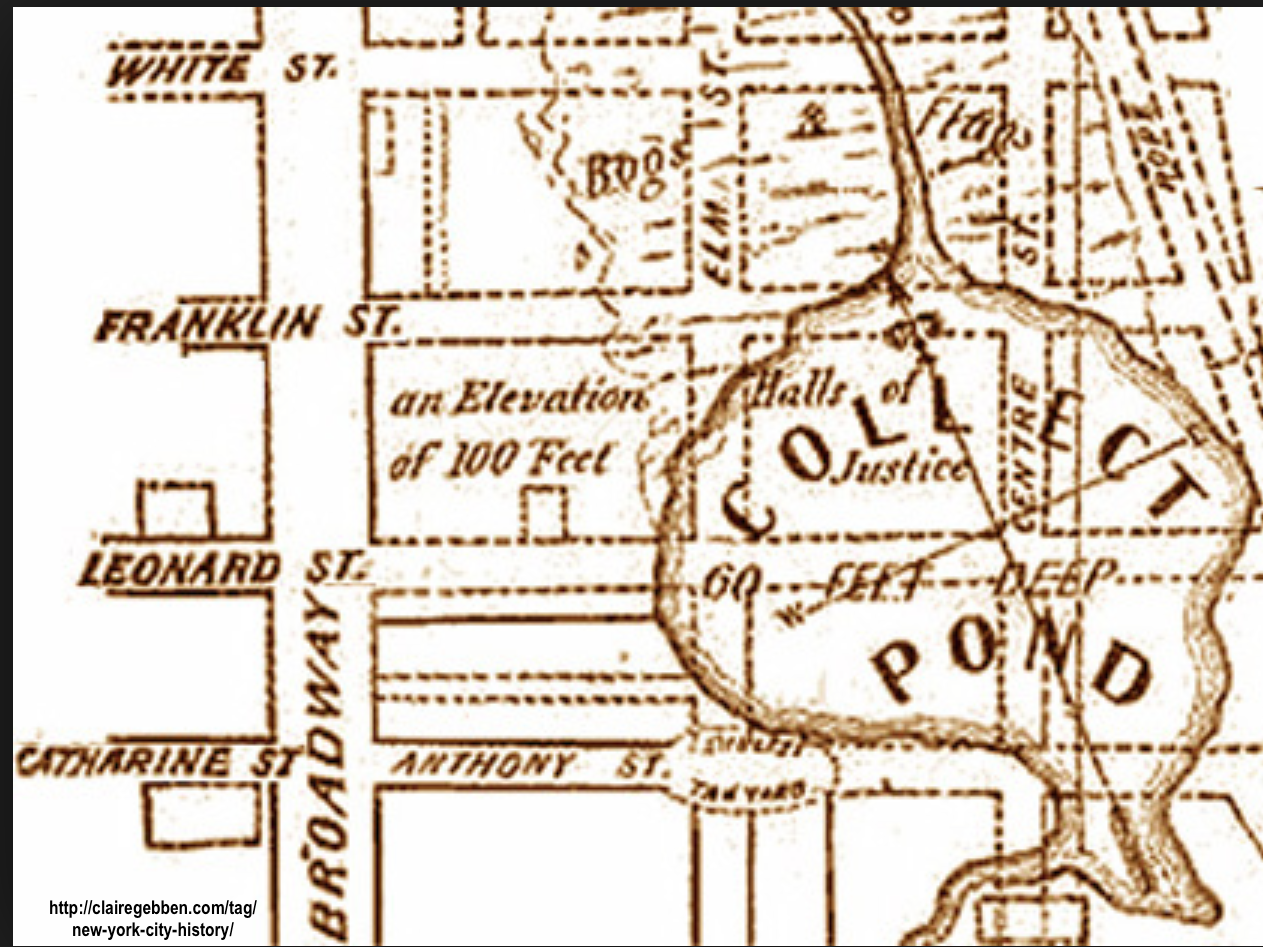
An article in the Troy New York Daily Times printed on July 31, 1877, recapped the various aforementioned mobs, riots, arsons, and insurrections, prior to, including, and after the “Election Riot of 1834.” The article added information that shed additional light on the election, and riot in the Sixth Ward’s Whig Headquarters and polling place, the Masonic Hall on Broadway.
Cornelius W. Lawrence was the Tammany-supported “Jackson Democratic candidate” and Gulian C. Verplanck, the Whig candidate. On the second day of voting, reports from various polling places, including the Sixth, reached the mayor, accompanied by requests by the Whigs for intervention. Claiming his police were otherwise engaged, the Whigs were left to defend themselves, which they did successfully with 1,800 men of their own. On the third day of voting, however, the Tammany roughs disrupted a Whig procession, stormed the Masonic Hall, assaulted the mayor, sheriff and forty men of the City Watch, until they were repelled. Destruction of polling places in others wards was widespread, with the destruction of their ballots and signage. The mayor himself was wounded and one man, identified only as “Police Captain Flagg,” was mortally wounded.
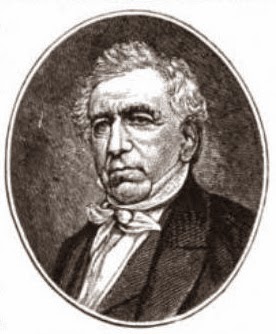
The mob’s resurgence caused them to overrun the the hall and “The mayor declared the city in insurrection and called for help from the navy yard and Fort Columbus. His requests were denied, however, General Sanford called out the military. “The polls were deserted and word came to the Whigs that the mob (Tammany) were going to attack the arsenal, but a crowd of citizens made a dash and occupied the arsenal before the mob arrived. “Finally, two squadrons of cavalry came down Broadway and, at the sight of them, the rioters gave up the conflict.”
Another source adds additional information to complete the account of the deadly Election Riot of 1834. On the third day of voting, the present mayor, Gideon Lee, arrived at the location of the poll, the Masonic Hall, the headquarters of Tammany’s opposition, the Whig Party, accompanied by a contingent of the City Watch, the City’s department responsible for policing at the time. Ten Watchmen and the mayor suffered injuries. Unable to restore order and enforce the law, “a detachment of infantry and two squadrons of cavalry were called to keep the mob of 15,000 in order. There rioters respected the shining bayonets and the horses’ hoofs.
According to an article published on April 11, 1834, in the NYC newspaper Sun “He (the mayor) begged them to consider the awful consequences of this movement” to introduce firearms. ‘Civil war’ was inevitable if they did not reconsider. ‘Stop, for the love of heaven, stop,’ said the Mayor, as the tear stood in his eye—‘You are rash—you know not what you do.’ After this impassioned plea, the Whigs came out of the arsenal without the weapons and order was restored. Thus ended the ordeal.
The ballot boxes of the Sixth Ward were taken to the City Hall, under guard, and the votes counted.”[6] Tammany’s Lawrence won the mayoralty by a slim margin and the Whigs won the majority of the Common Council.[7] According to Anbinder, the actual margin was 180 votes and the animosity was the result of growing tensions “between the Irish and the Americans” and not necessarily the Democrats and the Whigs.
The second mayoral election demonstrates the extent of corruption and effort that Tammany went through to win an election, here is a quick look at the second mayoral election. The election of 1838 proved to be remarkable in that both the Whigs and the Democrats (Tammany) literally hired the High Constable of Philadelphia to send as many men, including prisoners, to New York to vote for their candidate! A fee of $30 per man was paid and each party marked their men with ink for easy identification by the enforcers at the polls. These men also voted at more than one polling place, a practice known for a century later as being a “repeater.”[8]
To demonstrate how corrupt some Tammany public officials exploited their positions, let us take the case of two men whose acts of corruption were so egregious that they were classified as “defalcations” or large embezzlements of public funds. In 1838, these cases caused the U.S. Congress to appoint a committee to investigate how over $2,000,000 could be embezzled and how, after their cases were exposed, the men successfully fled to Europe to avoid prosecution.
The first was the “Collector of the Port of New York,” Samuel Swartwout, a Tammany man. Swartwout was appointed to the federal position (essentially that of the Customs officer for the Port of New York.) Swarwout was responsible for taxing imports (or not), levying fines (or not), and passing goods through the Port (or not), and so on. Swartwout was appointed by U.S. President Andrew Jackson (Democrat) in return for Swartwout’s “getting the vote out” in New York City, which Jackson considered a key win resulting in his election to the Presidency. So endemic was the “custom” of corruption in the port that even Swartwout’s assistant, appointed by the opposing political party’s President Martin van Buren, to “clean house” was determined to be part of the corrupt practices!
The second man investigated by the Congressional committee in 1835, was the United States Attorney for New York, William M. Price. Ironically, Preet Bharara, the man occupying that office today, is New York’s “Knight in Shining Armor” seemingly alone in the battle against city and state political corruption. Mr. Bharara successfully prosecuted two of New York State’s “Gang of Three,” NYS Assemblyman Sheldon Silver, Majority Leader (Democrat) and Minority Leader Dean Skelos (Republican). The third gang member is Governor Andrew M. Cuomo (Democrat), who, to date, has not been charged. Price, with over $72,000 dollars of the government’s money, like Swartwout, absconded to Europe.
Tammany’s antics over the ensuing decades solidified its role as the City’s leading political institution with its tentacles reaching far, wide, and deep into every facet of life, business and politics. Various well educated poets, laureates and orators worked for Tammany ahead of elections and promote the various candidates, many of whom had no experience in public speaking, or politics. Tammany needed leaders who could carry the torch for longer cycles and entrench Tammany’s influence even deeper into NYC, NYS and the federal government, politics, and corruption.
Tammany’s greatest victory would be the control over their yet to be reigned-in police force. While this would take some time and effort, their efforts would be greatly rewarded.
Feel free to share this link in any online forum or group!
Footnotes [#]
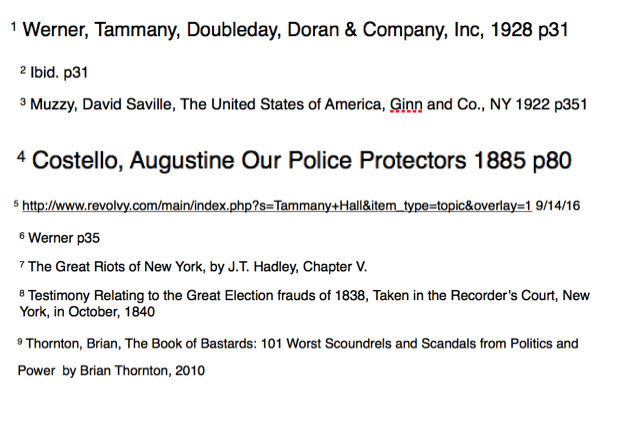
![]()


Leave a Reply
You must be logged in to post a comment.